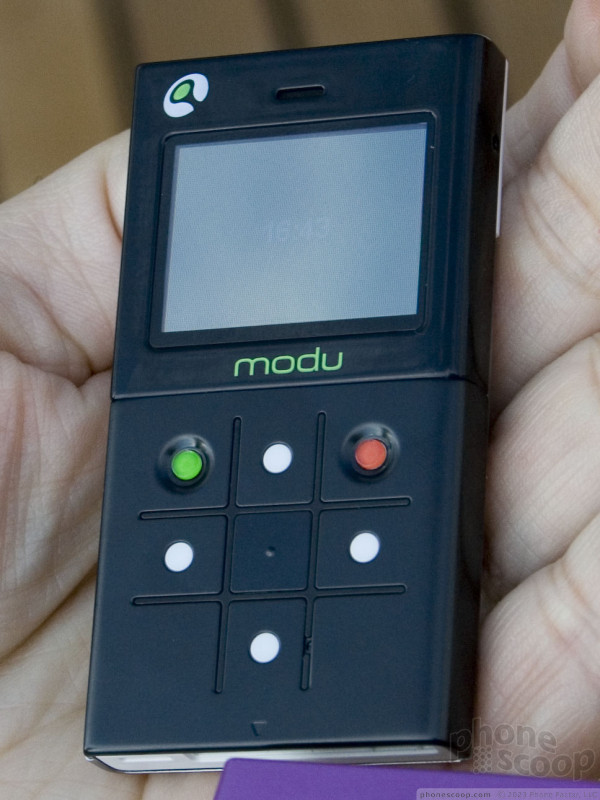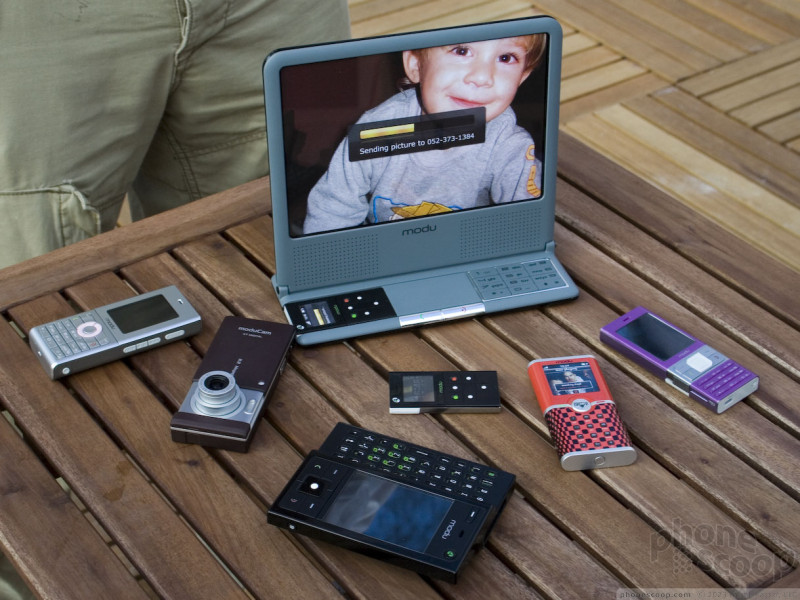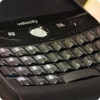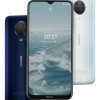MWC 2008
Phone technology has advanced to the point these days where it's possible to make phone that's entirely TOO small to actually be usable to most people. Several companies now make what is essentially an entire phone on a single chip. Add a battery, antenna, and speaker, and you've got a phone.
Modu is concept that takes advantage of this new paradigm to create a modular system that literally puts a "phone inside a phone". There's a core module that contains all of the main phone components and stores your data and content. This tiny core module can then be inserted into a variety of "jackets" that can be changed at any time.
Different jackets offer different features and form factors, so you can have a QWERTY keyboard and large screen for work, then a small, slim phone for going out in the evening, and a high-quality camera phone on vacation. The whole time, all of your messages, content and info stays with you - even call logs - because you're still using the same phone core module. All jackets at least offer their own display and keypad, so don't let the term "jacket" lead you think it's just a fancy faceplate - it's much than that.
The core module itself is incredibly tiny. It's powered by Texas Instruments "LoCosto" phone-on-a-chip, and it's manufactured by FoxConn, famous for making iPods and iPhones for Apple, among many other advanced high-tech devices these days.
The core module is actually a complete phone you can use by itself. It has everything you need: a speaker, microphone, antenna, battery, display, and buttons. It's so tiny that people will think you're mimicking Zoolander or a certain SNL skit, but it does work.
The core module is quad-band GSM and comes with at least 1 GB of memory (or up to 16 GB at a carrier's request.) The bottom has a long, skinny jack for interfacing with jackets. One end of the jack is actually standard microUSB, so you can connect the core module directly to a PC with any microUSB cable, for example.
The fun starts, though, when you dress it up in a jacket (and tie, if you use a wrist strap.) Modu was showing off several possible "jackets", including one for gaming, one with a QWERTY keyboard, and one with a serious camera on back.
As mentioned earlier, part of the advantage is that the user can switch "phones" whenever they want by switching jackets. Another advantage is that users can get a "new phone" (new jacket) every few months if they want, and jackets should be cheap enough that carriers can even build this into their subsidy-supported cost models. So for example, instead of "new every two" (a new phone every two years,) you might be able to get a new "jacket" for free every six months.
Jackets should be cheap because they don't contain any of cellular radio components that are so expensive and time-consuming to develop, engineer, and test. A jacket is only a mix of very standard electronics, so carriers can have many different jackets custom made just for their unique customer base, and they should be able to bring them to market very quickly and cheaply.
In addition to "jackets", there are "mates", which are generally larger devices like photo frames. Plugging the module into a photo frame mate lets you browse or transfer your photos and videos.
If this all smells like a vapor-ware concept, it's not. The units on hand at MWC were prototypes, but they were functional, not dummy units. More importantly, three major carriers have already committed to offering Modu in 2008, including TIM in Italy and VimpelCom in Russia.
The GSM Modu will ship in October. It will cost about Euro 200, which includes the core module and two jackets. A 3G version is planned for May 2009. Modu is in talks with US carriers and hopes to bring Modu to the US in mid-2009.














 CTIA 2008
CTIA 2008
 Samsung Refreshes Galaxy S Series with S Pen, New Cameras
Samsung Refreshes Galaxy S Series with S Pen, New Cameras
 iPhone 14 Plus Offers a Big Screen For Less
iPhone 14 Plus Offers a Big Screen For Less
 Samsung S24 Series Adds More AI, Updates the Hardware
Samsung S24 Series Adds More AI, Updates the Hardware
 Nokia Brings New G Series to US
Nokia Brings New G Series to US
 Nokia 6210 Navigator
Nokia 6210 Navigator
 Nokia 6220 Classic
Nokia 6220 Classic
 Nokia N96
Nokia N96

